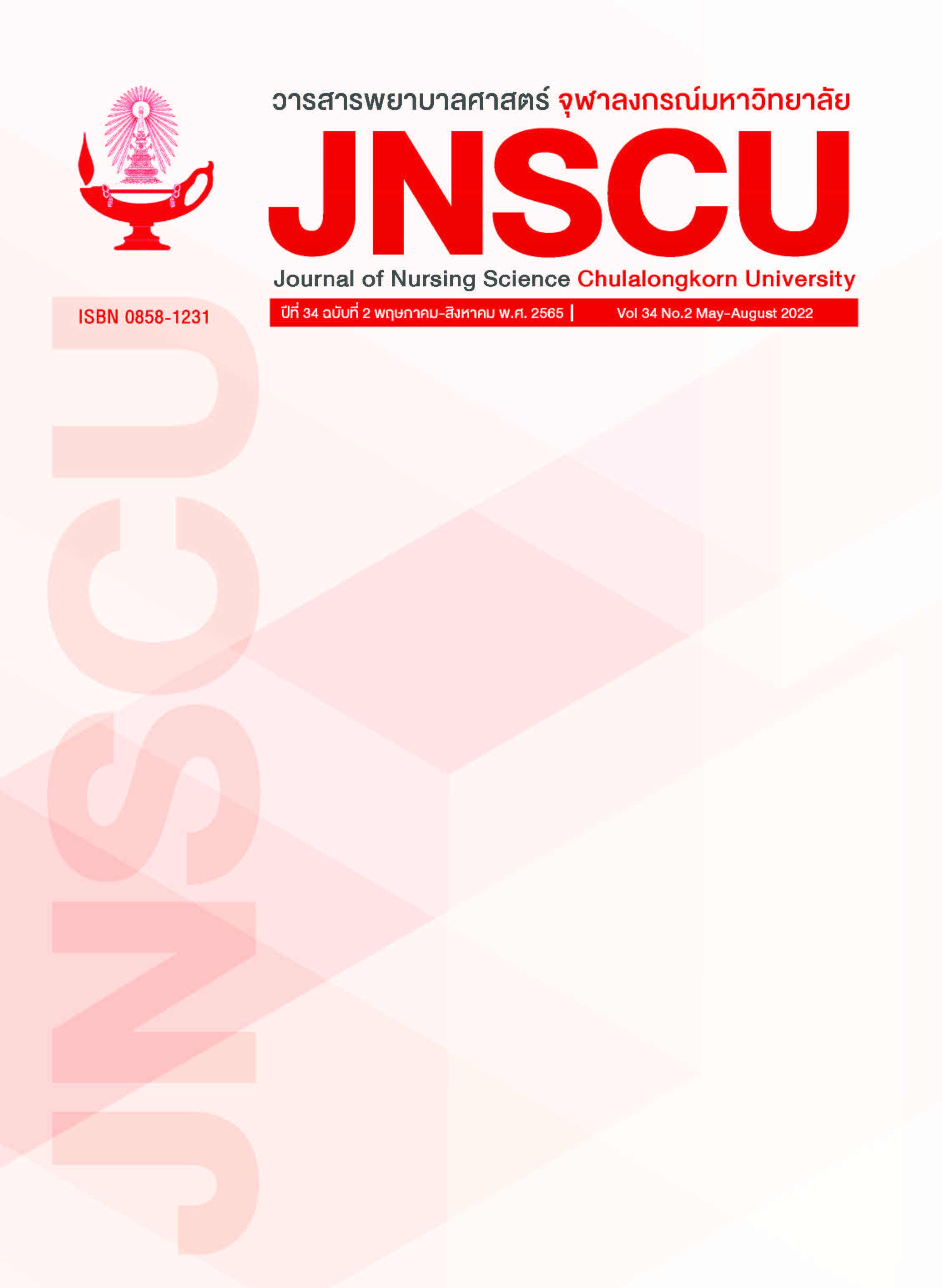การเข้ารับบริการห้องฉุกเฉินของผู้ป่วยไม่ฉุกเฉิน โรงพยาบาลศิริราช: การศึกษาเชิงพรรณนา แบบภาคตัดขวาง
คำสำคัญ:
ผู้ป่วยไม่ฉุกเฉิน, การให้บริการห้องฉุกเฉิน, การคัดกรองผู้ป่วยบทคัดย่อ
ผลการวิจัย: สาเหตุของการเข้ารับบริการห้องฉุกเฉินของผู้ป่วยไม่ฉุกเฉินที่พบมากที่สุด ได้แก่ ผู้ป่วยรู้สึกว่ามีอาการของโรครุนแรงไม่สามารถรอได้ ร้อยละ 45.5 ผู้ป่วยไม่ทราบบริบทการให้บริการห้องฉุกเฉิน ร้อยละ 21.7 และผู้ป่วยไม่สะดวกมารับบริการในเวลาราชการ ร้อยละ 15.2 สำหรับการการวิเคราะห์ปัจจัยที่มีความสัมพันธ์กับการเลือกเข้ารับบริการด้วยอาการเจ็บป่วยลักษณะเดียวกันครั้งต่อไป พบว่า การรับรู้ขั้นตอนการลงทะเบียนของหน่วยตรวจเฉพาะทางมีความสัมพันธ์เชิงบวกกับการเลือกเข้ารับบริการด้วยอาการเจ็บป่วยลักษณะเดียวกันครั้งต่อไปอย่างมีนัยสำคัญทางสถิติ (X2 = 6.11, p < .05)
สรุป: การศึกษาครั้งนี้แสดงให้เห็นว่า ผู้ป่วยที่รู้สึกว่ามีอาการของโรครุนแรงไม่สามารถรอได้ และผู้ป่วยที่ไม่ทราบบริบทการให้บริการห้องฉุกเฉิน เป็นกลุ่มผู้ป่วยไม่ฉุกเฉินที่เข้ารับบริการห้องฉุกเฉินนอกเวลาราชการมากที่สุด และการรับรู้ขั้นตอนการให้บริการของหน่วยตรวจเฉพาะทางมีความสัมพันธ์กับการเลือกเข้ารับบริการด้วยอาการเจ็บป่วยลักษณะเดียวกันครั้งต่อไป ดังนั้น ควรมีการแนะนำขั้นตอนให้บริการหรือการนัดหมายของหน่วยตรวจเฉพาะทาง การเพิ่มช่องทางการเข้าถึงคลินิกพิเศษนอกเวลาราชการ เพื่อช่วยลดความแออัดของห้องฉุกเฉินได้
เอกสารอ้างอิง
Bardelli P, Kaplan V. Non-Urgent encounters in a Swiss medical emergency unit. SMW 2013; 143. doi:10.4414/smw.2013.13760.
Van Den Heede K, Van De Voorde C. Interventions to reduce emergency department utilization: a review of reviews. Health Policy 2016; 120(12): 1337–1349.
Mousavi SM, Sadeghifar J. Universal health coverage in Iran. Lancet Glob Health 2016; 4:e305–6. doi:10.1016/S2214-109X(16)00068-1.
Filippatos G, Evridiki K. The effect of emergency department crowding on patient outcomes. Health Sci J. 2015; 9(1):1–6.
Al-Otmy SS, Abduljabbar AZ, Al-Raddadi RM, et al Factors associated with non-urgent visits to the emergency department in a tertiary care centre, western Saudi Arabia: cross-sectional study. BMJ Open 2020; 10:e035951. doi: 10.1136/bmjopen-2019-035951.
Medical Records and Medical Statistics Service. Statistics of patients receiving services from the emergency department, Faculty of Medicine Siriraj Hospital 2019; Bangkok. (in Thai).
Lee JY, Oh SH, Peck EH, et al. The validity of the Canadian triage and acuity scale in predicting resource utilization and the need for immediate life-saving interventions in elderly emergency department patients. Scand J Trauma Resusc Emerg Med 2011; 19:68. doi:10.1186/1757-7241-19-68.
Department of Emergency Medicine, Faculty of Medicine Siriraj Hospital, Mahidol University. Guide to patient screening criteria. Bangkok. Faculty of Medicine Siriraj Hospital 2015. (in Thai)
Ng CJ, Liao PJ, Chang YC, Kuan JT, Chen JC, Hsu KH. Predictive factors for hospitalization of nonurgent patients in the emergency department. Medicine 2016; 95(26): e4053. doi: 10.1097/MD.0000000000004053.
McCormack LA, Jones SG, Coulter SL. Demographic factors influencing nonurgent emergency department utilization among a Medicaid population. Health Care Manag Sci 2017; 20: 395–402. doi:10.1007/s10729-016-9360-8.
Uscher-Pines L, Pines J, Kellermann A, Gillen E, Mehrotra A. Emergency department visits for nonurgent conditions: systematic literature review. Am J Manag Care 2013; 19(1): 47–59.
Becker J, Dell A, Jenkins L, et al. Reasons why patients with primary health care problems access a secondary hospital emergency centre. S Afr Med J 2012; 102: 800. doi:10.7196/SAMJ.6059.
Dawoud SO, Ahmad AMK, Alsharqi OZ, et al. Utilization of the emergency department and predicting factors associated with its use at the Saudi Ministry of health general hospitals. Glob J Health Sci 2016; 8: 90–106. doi:10.5539/gjhs.v8n1p90
Bahadori M, Mousavi SM, Teymourzadeh E, Ravangard R. Emergency department visits for non-urgent conditions in Iran: a cross-sectional study. BMJ Open. 2019; 9(10): e030927.
Yamane T. Statistics: An introduction analysis. 2nd ed. New York: Harper and Row Harper & Row; 1973.
Morgan SR, Chang AM, Alqatari M, Pines JM. Non-emergency department interventions to reduce ED utilization: a systematic review. Acad Emerg Med. 2013;20(10):969–985. doi.org/10.1111/acem.12219.
Sangsong S, Boonterm S, Bunyaphothi S, Namsai W, Konkayan P. Use of medical service among non-emergency patients after the government hour at Sunprasitthiprasong Hospital. Sanpasitthiprasong Medical Journal 2021; 40(1-3): 1-10. (in Thai).
Armartpundit T. Factors Influencing Utilization of emergency medical service of severity and critical illness patients in Ubonrathchathani Province. J Health Sci 2017; 26(5): 883-95. (in Thai).
ดาวน์โหลด
เผยแพร่แล้ว
ฉบับ
ประเภทบทความ
สัญญาอนุญาต
ลิขสิทธิ์ (c) 2023 วารสารพยาบาลศาสตร์ จุฬาลงกรณ์มหาวิทยาลัย

อนุญาตภายใต้เงื่อนไข Creative Commons Attribution-NonCommercial-NoDerivatives 4.0 International License.
ลิขสิทธิ์ของบทความที่ตีพิมพ์เป็นของวารสารพยาบาลศาสตร์ จุฬาลงกรณ์มหาวิทยาลัย ทั้งฉบับตีพิมพ์เป็นรูปเล่มและเอกสารออนไลน์



